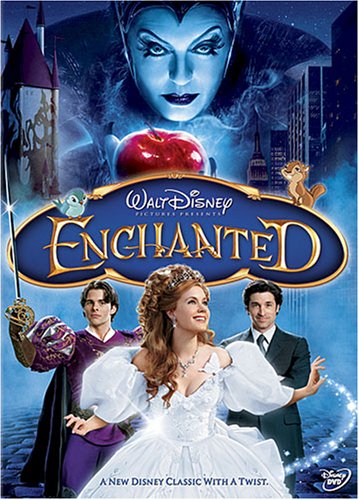All Nonfiction
- Bullying
- Books
- Academic
- Author Interviews
- Celebrity interviews
- College Articles
- College Essays
- Educator of the Year
- Heroes
- Interviews
- Memoir
- Personal Experience
- Sports
- Travel & Culture
All Opinions
- Bullying
- Current Events / Politics
- Discrimination
- Drugs / Alcohol / Smoking
- Entertainment / Celebrities
- Environment
- Love / Relationships
- Movies / Music / TV
- Pop Culture / Trends
- School / College
- Social Issues / Civics
- Spirituality / Religion
- Sports / Hobbies
All Hot Topics
- Bullying
- Community Service
- Environment
- Health
- Letters to the Editor
- Pride & Prejudice
- What Matters
- Back
Summer Guide
- Program Links
- Program Reviews
- Back
College Guide
- College Links
- College Reviews
- College Essays
- College Articles
- Back
Enchanted
“Enchanted” is a wonderful family friendly movie except for one thing: the lesson it teaches the easily malleable minds of the little girls who watch it. The article “Princess MasterCard” by Dana Stevens implies that this movie shows a credit card can outdo fairytale magic. The characters are seen shopping at real big-name stores and making unnecessary purchases. The main characters (fairytale princess Giselle and young girl, Morgan) are shown bonding through manicures. In the end of the movie, Giselle starts her own fashion store: Andalasia Fashions. But there looms a certain “yuck factor” to it all; “does these little girls' happily-ever-after consist only in getting Mommy to buy the right dress?” and “the image of a three-year-old bride.” Due to not securing the rights to the image of Amy Adams, Disney excluded Giselle in the Disney princess line-up and it “remains to be seen where Princess Tiana, the first African American Disney princess, will land on the hierarchy.
It's true, Enchanted seems like the perfect family friendly movie; there isn't suggestive content or strong language. And best of all, there's a happy ending. The sad part: this movie shows a credit card as better than the fairy godmother. This concept takes away from the magic of the fairytale and exhibits money as the way to happiness. Instead of reaching for “Daddy's credit card,” it would have been nice to see young Morgan ask her father for the money or better yet, use her own. Children are aware of name brand versus generic, and showing name brand items supports the idea that expensive things equal happiness. In the real world, when has buying the right dress ever been equivalent to a happy ending?
The frivolous use of a credit card displayed in Enchanted decreases the credibility of the value of money in the eyes of young girls. Money is made to look like a renewable resource that Mom and Dad can conjure out of thin air. It gets worse; in the movie, Morgan is stealing Daddy's credit card to take it on a shopping spree with her new friend. Not only is Morgan blind to the value of money, she is stealing it. Is this what we want for our little girls?
Although the overall lesson of the movie is not worth teaching young girls, the end of the movie proves inspiring. When Giselle starts her own business, it shows she can be an independent individual while doing something she loves. It sets a good example for young girls: they don't need to be completely dependent on Prince Charming.
Bringing up the so-called issue of race of the princesses is uncalled for. The race of the princess isn't what counts, it's her popularity. If minority princesses, such as Mulan or Pocahontas, aren't was well-liked, what's the big deal? Life will go on if not every princess is in the parade.
I'm sure you wouldn't like it if I told your young daughter that shopping for expensive things paves the way to her happily ever after. Why should the movies she watches? Little girls need to know that life doesn't magically turn beautiful with the swipe of a credit card.
Similar Articles
JOIN THE DISCUSSION
This article has 3 comments.

